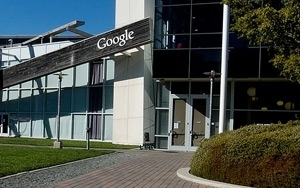Commentary
Google To Build Own Messaging App - What Took So Long?
- by Mark Walsh @markfwal, October 3, 2014
 Google isn’t giving up on messaging apps. The Economic Times reports
today that the search giant is planning to launch its own mobile messaging app after Facebook came away with WhatsApp in a $19 billion acquisition earlier this year. Google had reportedly made an
offer of $10 billion to buy WhatsApp, falling well short of Facebook’s winning bid.
Google isn’t giving up on messaging apps. The Economic Times reports
today that the search giant is planning to launch its own mobile messaging app after Facebook came away with WhatsApp in a $19 billion acquisition earlier this year. Google had reportedly made an
offer of $10 billion to buy WhatsApp, falling well short of Facebook’s winning bid.
The forthcoming Google app is likely to launch next year in India and other emerging markets, with no login required as with other Google products, according to the report. If nothing else, Google will save a lot of money by building its own messaging app in-house rather than shelling out billions for an established brand in the category.
That’s not to say that Google wouldn’t also go out and buy another app — it was said to have trumped Facebook’s $3 billion offer last year for Snapchat by bidding $4 billion, but the company’s CEO Evan Spiegel passed on both offers on the belief that its value would rise even higher. But while Google has lagged in social, and social in mobile, it also boasts some of the top apps in terms of reach and usage.
As of August, Google had five of the largest apps (by unique visitor) in the U.S., including YouTube, Google Play, Google Search, Google Maps and Gmail. Apple may have provided the biggest endorsement for Google-made apps when it made Apple Maps the default maps apps for the iPhone two years ago, sparking a huge user backlash, and the subsequent rollout of a separate Google Maps app for iOS.
Google has shown the ability to create popular utility apps, albeit extensions of products already widespread on the desktop Web, so building its own messaging app seems like a natural step, and one that could be integrated with its existing mobile offerings. It also, obviously, has one of the best-known brands in the world.
Testing the app In India and other regions outside the U.S. looks like a smart move too, where mobile devices and apps are especially crucial for digital connectivity and the addressable market is massive. India alone has nearly 1 billion mobile users. Emerging markets also represent the fastest growth for smartphones, with IDC estimating these areas will account for almost three-quarters of smartphone shipments this year.
Google also has the advantage of having the most pervasive mobile operating system, which by year-end will run on 77 % of the world’s smartphones, per IDC. That gives the company a powerful distribution platform for packaging any messaging app introduced, whether bundled with the software or offered through Google Play. Still, it has to come up with something that people will want to use given all the other options out there already.
Somehow, there always seems to be room for more. That includes Hike, a messaging app that has gained traction with younger people in India and now has over 35 million registered users. Google may not release the next hot messaging app, but at least it will get in the game and add a missing piece of its existing app portfolio.



